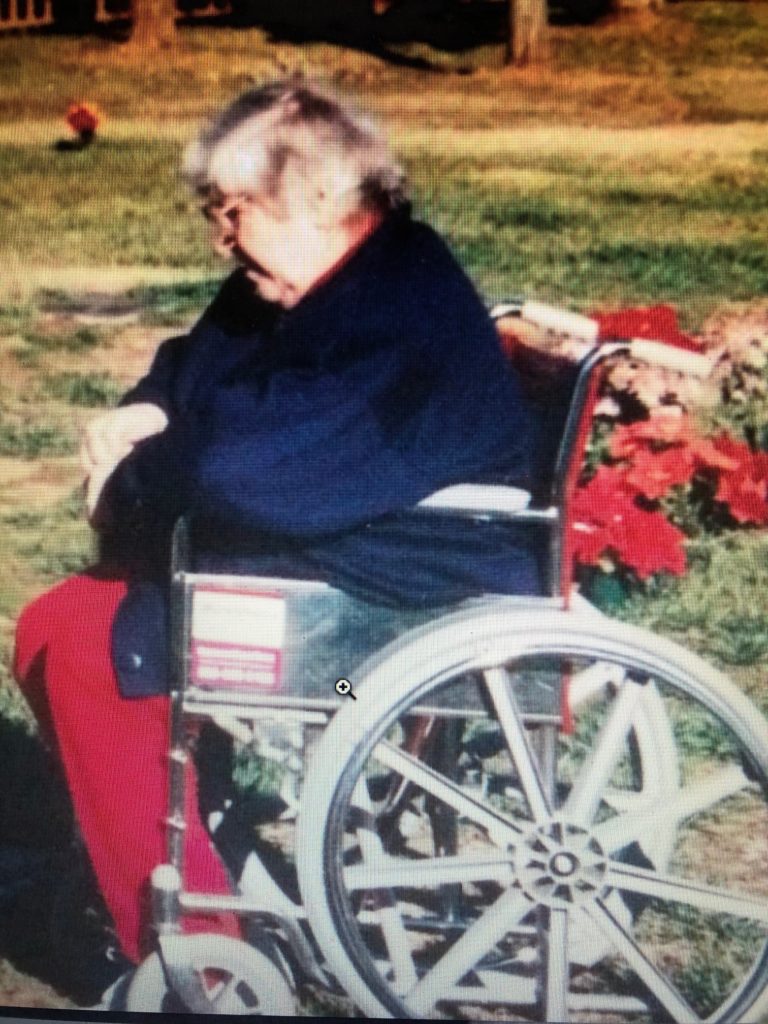
“You know what these people need?” my mother said to me, without a hint of bitterness. “They need to spend a few days in an Iron Lung.”
I looked at her, into her deep, kind, hazel-colored eyes. Her large circular eyeglasses seemed to magnify her eyes into large, pristine, comforting pools.
Short, plump, diminutive in her housedress, my mother was a Polio survivor for 92 years, paralyzed on one side of her body as an infant, during the Polio pandemic of 1915–16. She felt blessed to be alive, even if, decades later, she still couldn’t use her right arm, and spent her final years in a wheelchair.
In 1916, the year my mother contracted Polio during her first few months of life, 27,000 cases of paralysis were registered, with over 2,000 deaths being reported in NYC alone. Most of those cases were among children under five years old.
She pointed at the crazed, screaming men and women she saw on television, veins close to bursting out of their necks, mouths, if not eyes, wide open, opposing vaccines for themselves or their children.
“They need to have a machine breathe for them; breath-for-breath, up and down, up and down. They don’t know how good they have it,” she said. “They need to know what it’s like to suffer day after day after day — with no hope of getting better.”
She recalled the hours she spent at the Crippled Children’s Home, undergoing physical therapy on her limp right arm, walking past the rows of half-open steel pods which looked like open caskets — Iron Lungs — each of which held a young child gasping for air, their breathing muscles immobilized by the disease. Many of them died.
“Everytime I saw them, and heard the loud up-and-down noises those machines made, I felt so lucky that I was only paralyzed in my right arm; I learned to write and play with my other arm, “ she said. “Those poor kids couldn’t come out of those dark tunnels, or they wouldn’t be able to breathe. They couldn’t even hug their mothers and fathers.”
She shook her head in disbelief.
“ I was so lucky,” she said. “ Even though they wouldn’t let us Polio kids into the public swimming pools in New York City, I taught myself to swim as best I could, on the beaches of Coney Island. I thank God to this day that all I had was one bad arm.”
A devout Catholic, who later went on to teach Sunday school for the Children of Mary, my mother spent hours praying for those she knew were not as fortunate.
“I remember riding on the school bus Upstate with the Fresh Air Fund,” she said, referring to the program promoted by New York City and The New York Times which took underprivileged kids from urban areas and gave them a week of camp in “the country.”
“On our ride up through the Catskills, we’d pass camp after camp along the way with big giant hand-written signs, “NO POLIO KIDS ALLOWED, “ she recalled, looking off to the side, as if looking out a school bus window at the foreboding message.
“NO POLIO KIDS ALLOWED,” she repeated. “You would have thought they’d be nicer to us since President Roosevelt had Polio, too. Still, I was so grateful just to have a place to go that would let us play outside.”
Despite leadership from FDR, the full-throated support of entertainers like Eddie Cantor, and a widely-supported national campaign named the “March of Dimes” to raise tens of millions of small contributions for vaccine research, it took some 60 years from the time the Polio virus was first identified in 1894 to when Dr. Jonas Salk discovered the first mass distribution Polio vaccine.
People danced in the streets, hugging and kissing one another with joy and relief when the announcement was made in 1955, that there was finally a vaccine to protect their children from paralysis and death. The Centers for Disease Control estimated that the Polio vaccines, and their near universal acceptance in the US and around the world, saved some 17 million people — mostly children under 5 — from paralysis, and thousands more from death.
My mother, raising 4 children on Long Island, believed her prayers were finally answered, and that her parade of dimes religiously slipped into “March of Dimes” coin holders for almost 15 years, contributed to making life much safer for her children.
There was never any question that we would be vaccinated. To do any less would have been immoral and inexcusable, especially since this one, grateful Polio survivor witnessed what life was like for some children, less lucky than she, through the long, lightless lens of an Iron Lung.

